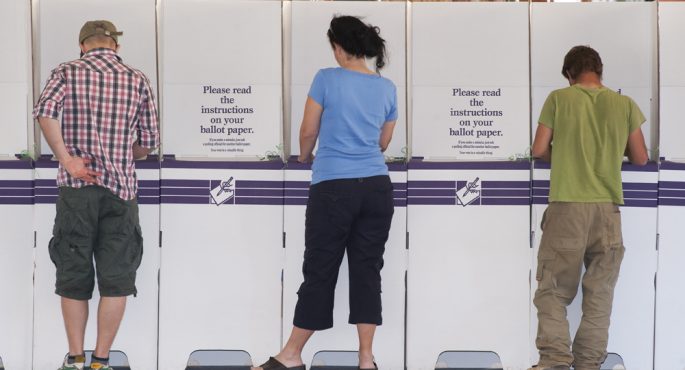
If you have a mobility disability and have had trouble accessing a polling booth in your electorate, PIAC wants to hear from you.
We’re planning to take coordinated legal action to drive improvements to accessibility at polling places so that people with mobility disabilities can vote in Federal elections in the same way as everyone else.
Being able to vote in a local polling place is something most of us take for granted in a democratic society. Yet for an increasing number of people with physical disabilities, there is no guarantee that there will be somewhere accessible to vote near their home. In fact, according to the list of expected polling places available on the Australian Electoral Commission’s (AEC) website, as few as 3% of polling places will be fully accessible at the next Federal election, despite the Commonwealth Electoral Act 1918 (Cth) stating that electors are entitled to vote on election day at any polling place in their electorate.
This lack of accessible polling booths has led to people with mobility disabilities being forced to travel long distances to vote or being compelled to vote on the street or in their cars (which is no easy task with blanket-sized senate ballot papers). Not only does this afford much less privacy than voting in a booth, but it excludes people from the experience of engaging with our democratic processes in the same way as the majority of Australians.
One of PIAC’s clients called the AEC after discovering that there were no accessible polling places in her electorate. Officials suggested she vote at a nearby pre-polling station but when she arrived, she discovered the accessible entrance was blocked by cars and there was no room for her to manoeuvre her wheelchair.
With the help of her paid carer, she was eventually able to seek assistance from an electoral official. However, her only option was to fill out the ballot papers in her car with reduced privacy. She found it difficult to manage the lengthy NSW Senate ballot paper in the restricted space and so voted above the line instead of below the line as she would have preferred. She was also unable to place the ballot in the ballot box herself and had to rely on an electoral official to cast her vote. She had no way of confirming that this had been done or that the privacy of her vote had been respected.
What is the Voting Rights Project?
PIAC’s Voting Rights Project aims to assist people who experienced difficulty accessing polling booths at the 2016 Federal election because of their physical disability to make formal discrimination complaints.
PIAC is looking for people to participate in the project who:
- Voted or attempted to vote at a polling or pre-polling booth at the 2016 Federal election; and
- Faced difficulties or were prevented from voting in person because of the physical inaccessibility of the polling or pre-polling booth.
If you would like to participate, you need to contact PIAC before 1 May 2017.
For more information or to discuss your story please contact Solicitor Brooke Greenwood on (02) 8898 6556 or [email protected].